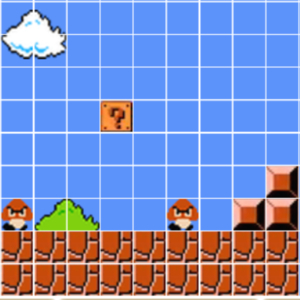Projects

Friend, Collaborator, Student, Manager: How Design of an AI-Driven Game Level Editor Affects Creators
Machine learning advances have afforded an increase in algorithms capable of creating art, music, stories, games, and more. However, it is not yet well-understood how machine learning algorithms might best collaborate with people to support creative expression. To investigate how practicing designers perceive the role of AI in the creative process, we developed a game level design tool for Super Mario Bros.- style games with a built-in AI level designer. In this paper we discuss our design of the Morai Maker intelligent tool through two mixed-methods studies with a total of over one- hundred participants.
View Project
Explainable PCGML via Game Design Patterns
PCGML is the umbrella term for approaches that generate content for games via machine learning. One of the benefits of PCGML is that, unlike search or grammar-based PCG, it does not require hand authoring of initial content or rules. Instead, PCGML relies on existing content and black box models, which can be difficult to tune or tweak without expert knowledge. This is especially problematic when a human designer needs to understand how to manipulate their data or models to achieve desired results. We present an approach to Explainable PCGML via Design Patterns in which the design patterns act as a vocabulary and mode of interaction between user and model. We demonstrate that our technique outperforms non-explainable versions of our system in interactions with five expert designers, four of whom lack any machine learning expertise.
View Project
Checker I Hardly Know Her
The goal of this project is to return the optimal next move in a game of checkers. The expected input is an image of a checkerboard as well as the color of checkers for which the decision is being made. The image can be taken from a range of angles relative to the horizon, but must be taken from the starting side corresponding to the color input. The desired output is the best next move, viewable as both coordinates and an image.
View Project
Share and (Car) Share Alike - Modeling New Approaches To Mobility
Modeled the statistical distribution of national driving patterns and car-sharing platforms using Markov chains. Top six among eleven-hundred national teams and delivered a report to mathematicians at a national gathering.
View Project